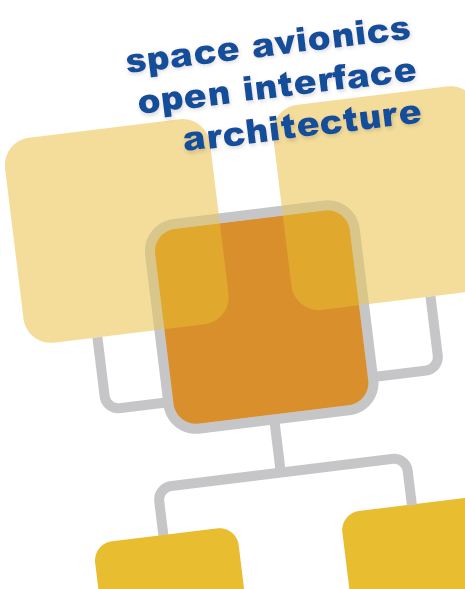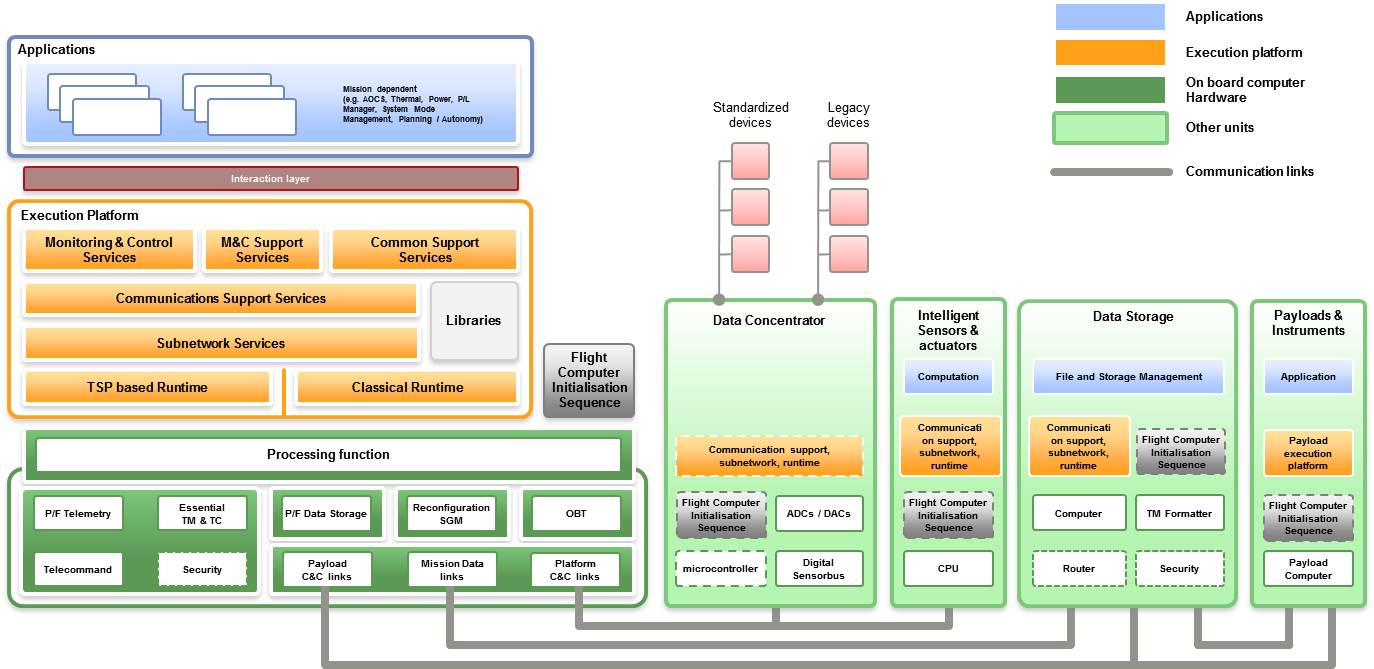
The origin of SAVOIR and SAG
Space industry and Agencies have recognized already for quite some time the need to raise the level of standardisation in the spacecraft avionics systems in order to increase efficiency and reduce development cost and schedule.A number of initiatives have been and are ongoing towards this vision, both on the side of industry and in the frame of ESA’s R&D programmes. However, increased coordination of these actions is needed in order to achieve the necessary synergy and to ensure they converge towards the shared vision. It has been proposed to federate these initiatives under the common Space Avionics Open Interface Architecture (SAVOIR) initiative. Within this initiative, the approach based on reference architectures and building blocks plays a key role. An action stemming from the European Technology Harmonisation Group (THAG), led to the 2007 round table on Avionics Reference Architectures, during which number of Actions were agreed. Progress on these actions required a platform where technical discussions could take place and where key recommendations (e.g. what standards to develop) could be made by the stake holders. To this end, an Advisory Group was established to steer the work plan of the technical discussions, referred to in this document as the SAVOIR Advisory Group [SAG].
Objectives and Scope

|
The overall goal of the SAVOIR initiative is to streamline the development of the avionics system for space programmes, considering the need to increase efficiency and cost-effectiveness in the development process and taking into account the trend towards more functionality implemented by the onboard building blocks, i.e. HW and SW components, and more complexity for the overall space mission objectives. As far as SAVOIR is concerned, the term avionics is meant to include:
|
The scope of SAVOIR also covers P/L data handling for the elements having strong commonality with the platform avionics. Interfaces with e.g. power system, TTC need to be considered.
The establishment of the SAG contributes to the synergy across various initiatives in the domain of avionics. The objective of the SAG is to review the current roadmaps, to guide the R&D activity plans and to monitor their execution in order to maximise the results towards the shared vision.
The objective of SAVOIR is to achieve the definition of reference architectures, based on open interface standards, for the purpose of specifying building blocks that can be developed, qualified and composed into compliant avionics systems with a minimum of re-engineering effort and providing a maximum of reliability and performance.
SAVOIR phase 1 results
SAVOIR produced in 2009 and 2010 a list of prioritized avionics building blocks.
SAVOIR created three subgroups to focus on Software Architecture (SAVOIR-Faire), on Sensor and Actuator Electrical Interface (SAVOIR-Saif) and on Sensor and Actuator Functional Interface (SAVOIR-Safi). The first two groups gave results in 2010, the latter in 2011.
SAVOIR prepared the Harmonisation Technical dossier and R&D Roadmap for Avionics in 2010.
SAG has run 11 meetings from November 2008 to September 2010.
Dissemination in ADCSS
Since about 2005, ESA organizes a yearly workshop called ADCSS (Avionics Data, Control and Software Systems), open to industry and other space agencies. The goal is to address specific avionics issues, expose intentions, query feedback, initiate discussions.
In 2007, a specific round table on Avionics Reference Architecture established a list of actions on R&D plans, Building Block definition, standardisation actions and coordination needs.
In 2008, SAVOIR was presented as the coordination mean, as a result of the ESA R&D Harmonisation process. SAVOIR was kicked off the 25th November 2008. The preliminary list of Building Blocks was introduced.
In 2009, a day was dedicated to SAVOIR, including the presentation of the results of the two working groups on software and AOCS electrical interface, and presentations on various R&D roadmaps and harmonisation. The list of Building Blocks was updated.
SAVOIR Phase 2: from concept to implementation
The first phase of SAVOIR allowed creating a community of stakeholders who had a priori no special incentive to work together, due to organisational reasons.
The concept of avionics, which initially was a technical subsystem in a spacecraft, was provided with a forum of discussion where the stakeholders started to share ideas, vocabulary and concepts, ultimately agreeing on the need for reference architecture and building blocks with standardized interface.

|
The diagram of one avionics architecture became the symbol of SAVOIR. But, if a list of building blocks is proposed, the definition of a Savoir process and its deployment was needed. |
SAVOIR Phase 3: from implementation to deployment
This phase includes the public review of the documents (organisation and running), their dissemination (policy and infrastructure), and the deployment in projects (applicability definition, inclusion in ITTs). This is the phase that SAVOIR is currently running.
|
|
||
|
|
More information: |
|